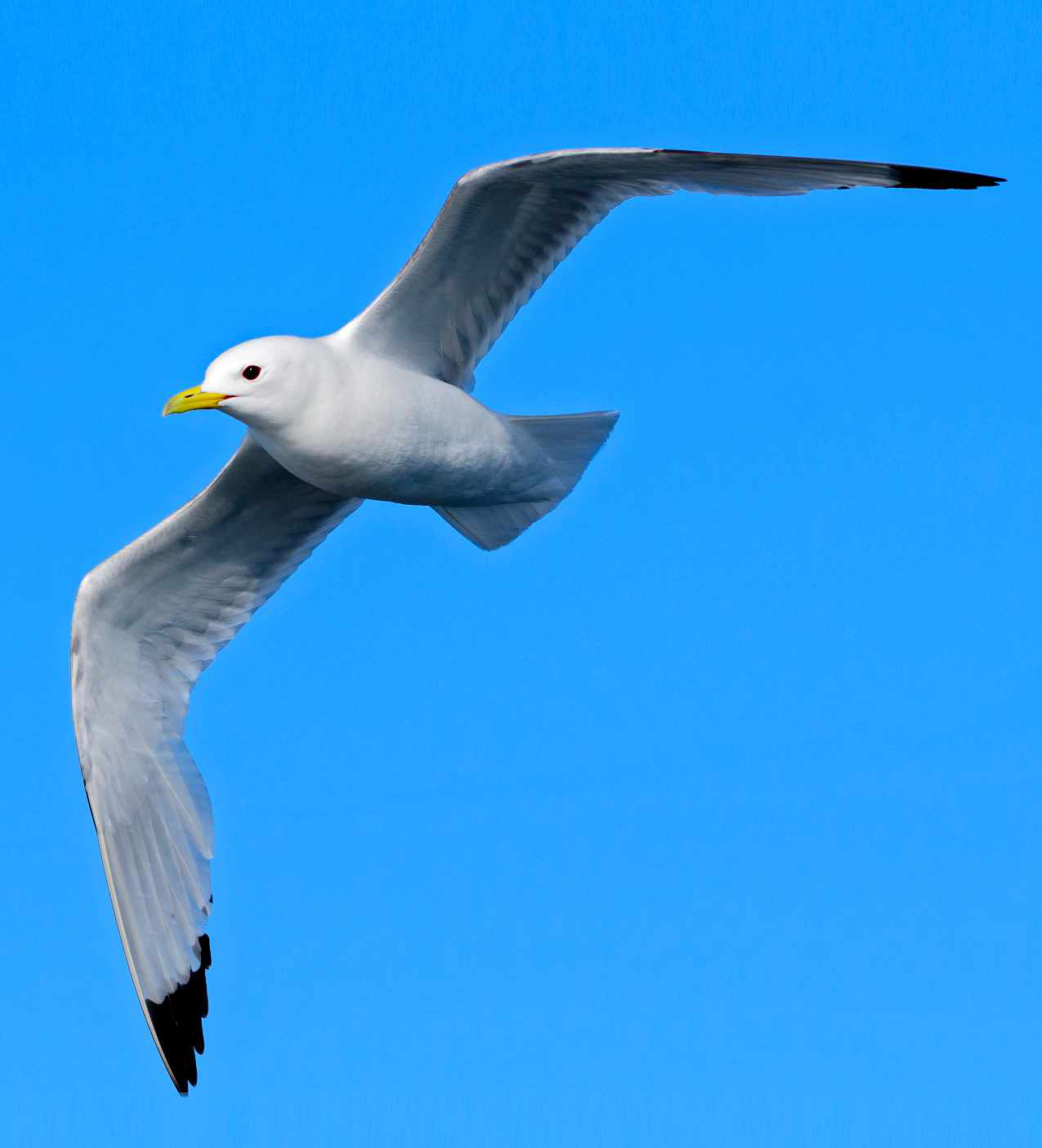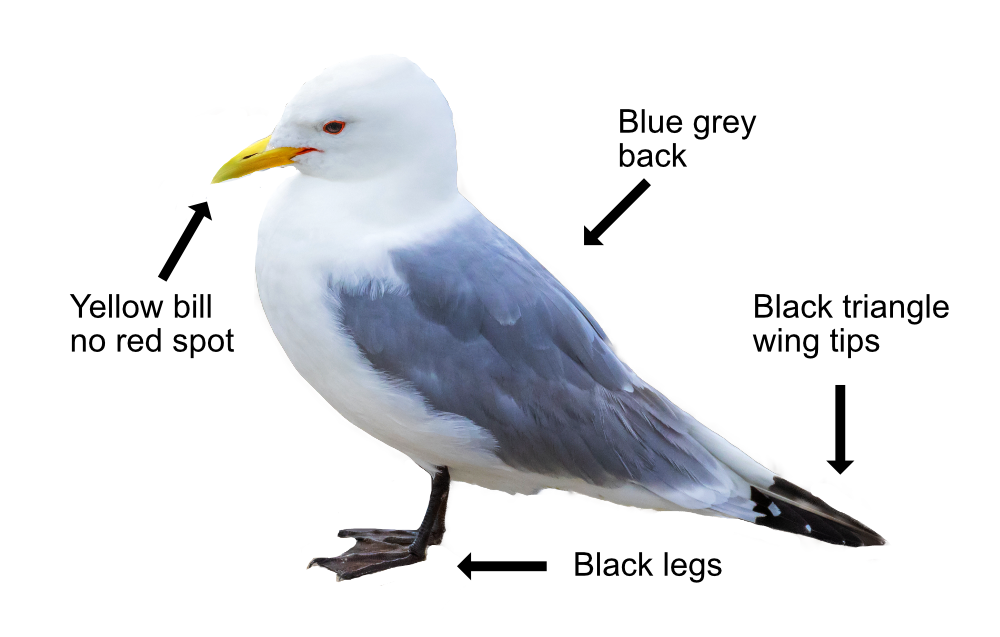
The Kittiwake is a true 'sea gull', spending more time at sea than other gulls. It is a brilliant flyer, even in gales and storms, looking Tern-like on stiff wings. It is unusual to find a Kittiwake inland. In North America, our Kittiwake is known as the Black-legged Kittiwake to differentiate it from the Red-legged Kittiwake, only found there.
The Kittiwake is gentle-looking and Common Gull sized. It has a white body with a blue-grey back and distinctive black triangular wing tips that look like they have been dipped in ink. Their bill is yellow with no red spot or mark and they have black feet. Youngsters have a 'W' pattern on their wings and a dark mark behind their eyes. They say their name, calling a gruff "kitty-wake".
Large numbers of Kittiwakes will gather where food is plentiful, plunge diving to feed on herrings, sprats, and sand eels. If fish are scarce, they will eat shrimps and squid. They will also follow fishing boats and even whales to pick up any discarded fish scraps. Unlike other gulls, they turn their noses up at scavenging on landfill sites. An upper-class bird of the seas.

Kittiwakes nest on the sheerest of sea cliffs, in noisy colonies, from February to August, often with Guillemots and Razorbills. Both mum and dad build the nest by cementing seaweed to a cliff ledge with their droppings to create a cup shape nest that stops the eggs from rolling off. The nest is lined with soft, dry material such as moss or grass. Both parents take turns incubating the 2 eggs, which hatch after 27 days. They feed the youngsters until they can fly and become independent 40 days later. The young Kittiwakes leave in autumn and fly to Greenland where many will spend their first two years before returning to the nesting site, though they won't breed themselves until they are 4 years old.
Kittiwakes can live for 20 years or more and UK numbers have grown to 400,000 with nest sites on bridges and buildings near the sea. Worldwide, it is one of the most numerous seabirds. As they rely so much on the sea, they are vulnerable to falling food stocks from overfishing and global warming.
Their Latin name is 'rissa tridactyla' where 'rissa' is from the Icelandic name 'rita' for a Kittiwake and 'tridactyl' is from the Ancient Greek 'tridaktulos' meaning 'three-toed', ('tri' for 'three' and 'daktulos' for 'toe'). The English name is derived from their call.